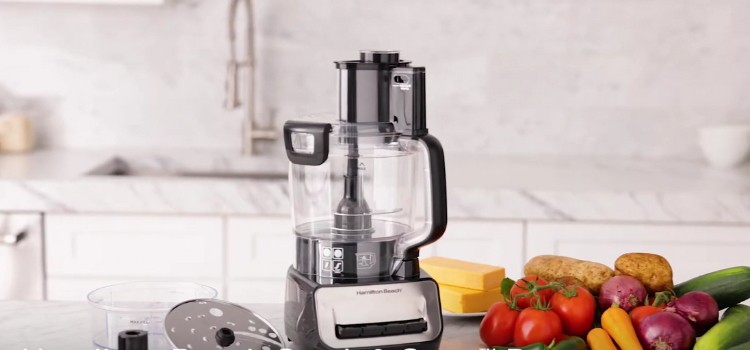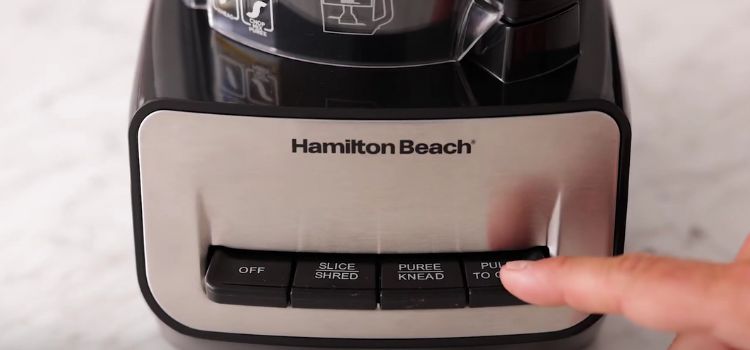As an Amazon Associate, I earn from qualifying purchases

In today’s fast-paced world, kitchen appliances that save time and effort are incredibly valuable, and food processors are at the forefront of this culinary revolution. Known for their versatility, food processors have become a staple in modern kitchens, simplifying tasks that would otherwise take considerable time and effort. One such task is chopping onions.
Often dreaded due to the tears and the precise knife skills required, chopping onions is a fundamental step in countless recipes. But can a food processor efficiently tackle this task? Let’s explore the capabilities of this appliance to see if it can replace the traditional knife when it comes to onions.
Benefits of Using a Food Processor for Chopping Onions
When it comes to chopping onions, the food processor offers several compelling benefits:
- Speed and Efficiency: Using a food processor can significantly cut down on the time it takes to chop onions, especially when dealing with large quantities. Instead of meticulously dicing each onion by hand, simply quartering them and tossing them in the processor can transform a tedious task into one that takes mere seconds.
- Consistency: Another advantage is the uniformity of the chops. Consistency in onion size is crucial for even cooking, whether you’re sautéing them for a stew or using them as a base for sauces. A food processor can provide this uniformity effortlessly, ensuring that your onions cook evenly every time.
- Reduced Exposure to Fumes: The tears induced by onion fumes are an age-old kitchen nemesis. A food processor minimizes your exposure, as the chopping process takes place within the closed bowl of the appliance, significantly reducing irritation and discomfort.
Step-by-Step Guide on How to Chop Onions Using a Food Processor
For those unfamiliar with using a food processor for onions, here’s a detailed guide:
- Preparation: Start by selecting the appropriate blade; a standard chopping blade usually works well. Peel the onions and cut them into quarters. This size is optimal for most food processors, allowing the blades to work effectively without overloading the appliance.
- Operating the Food Processor: Place the onion quarters into the processor bowl. Secure the lid and pulse the processor a few times, checking the consistency between pulses. This helps control the chop size and prevents over-processing.
- Safety Precautions: Always ensure the food processor is turned off when adding or removing onions. Keep your fingers away from the blades and use the provided tools to handle food within the processor.
Tips for Achieving the Best Results

To get the most out of your food processor when chopping onions, follow these tips:
- Pulse Setting: Use the pulse function for better control over the chop size. Longer processing can lead to mushy onions, which are not ideal for most recipes.
- Avoid Over-Processing: To maintain the integrity of the onions, avoid running the processor continuously. Pulsing allows you to achieve a desirable texture without turning the onions into a puree.
- Maintenance: Regular cleaning and proper maintenance of your food processor will ensure its longevity. After use, disassemble the parts and wash them thoroughly to prevent odors and residue buildup.
Potential Drawbacks or Considerations
While the food processor is a handy tool, there are some considerations to keep in mind:
- Texture Limitations: Achieving a finely diced texture might be challenging, as processors tend to chop rather than dice. If a specific texture is needed, manual finishing might still be required.
- Uneven Chopping: Improper use or overloading the processor can lead to uneven chopping. Ensuring the onions are evenly distributed in the bowl can help mitigate this issue.
- Cleaning Time: Unlike a knife and cutting board, a food processor requires more effort to clean thoroughly, which might outweigh the time saved during the chopping process for small tasks.
Conclusion
In conclusion, a food processor can indeed be a valuable ally in the kitchen when it comes to chopping onions, offering speed, efficiency, and consistency with minimal exposure to irritating fumes. By following the right techniques and precautions, you can maximize its utility for this common task. While there are some limitations and considerations, these are easily managed with practice and care.
Embracing the food processor for such tasks not only enhances your cooking efficiency but also encourages experimentation with other processing tasks in your culinary adventures. With these insights, you can fully harness the capabilities of your food processor, making it an indispensable tool in your kitchen repertoire.
FAQ
Can you chop with a food processor?
Yes, a food processor is highly effective for chopping various ingredients, including vegetables, nuts, and herbs. By using the pulse function, you can achieve consistent chop sizes quickly and efficiently, making it a valuable tool for saving time in meal preparation.
Can you dice in a food processor?
While a food processor excels at chopping, achieving a precise dice is more challenging. Processors tend to produce uneven pieces, so for perfect dicing, manual finishing might be needed. However, the pulse function can help create a rough dice if precision is not critical.
What is the best processor for chopping onions?
The best processor for chopping onions should have a strong motor, sharp blades, and a pulse function for control. Models like the Cuisinart or Breville offer powerful performance and durability, making them ideal for efficiently chopping onions and other vegetables in various kitchen tasks.
As an Amazon Associate, I earn from qualifying purchases